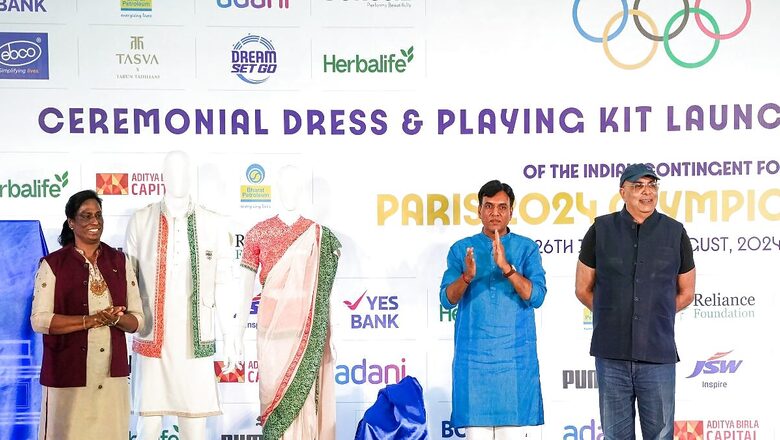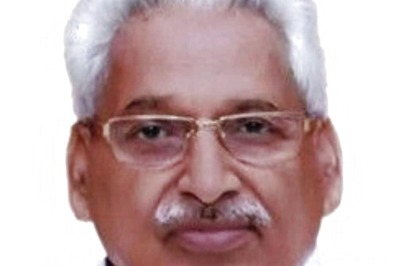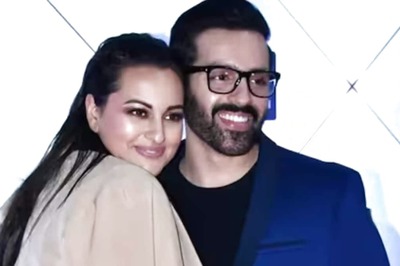
views
Two words that simply do not go together are “weave” and “print”. Such a pairing sends shivers down the backs of all textile aficionados even if most fashionistas will shrug and wonder why. The tragedy of India’s textile tradition is that its intricacies remain unknown to and unappreciated by most people, especially those who should know better. Hence, we are regularly treated to creations with “prints” of everything from ikats to bandhni to leheriya.
The Indian contingent’s uniform at the ongoing Paris Olympics, however, united both the informed and uninformed in a common outcry of disdain and despair. Dull, crushed and badly draped, this collection by the fabled Tarun Tahiliani will be one that he will certainly not want remembered by, even if he has testily hit back at detractors by pointing out that “it is not a couture show”. The fact remains India could have done better, in terms of both colour and cut.
When a country has such a rich tradition of weaves, prints, dyeing, applique and embroidery, any designer would be in a dilemma about what to incorporate. Add to that the compulsions of airline travel and limited facilities for clothes maintenance at the venue, the constraints are evident. But that is no excuse for a plain white base for the uniform that not only showed up every wrinkle but also clashed horribly with the shiny golden brocade footwear!
Bright and smart are not incompatible with “Indian” and Paris offered the best chance to run riot with colour and cut. After all, the fashion maven Diana Vreeland perceptively declared way back in 1956 that pink is the navy blue of India! But down the decades, no designer for Indian Olympic contingents has ever boldly accentuated this Indian love of colour. They mostly stuck to subdued blues and bronzes, with turbans providing the occasional pop of colour.
Before the Indian contingent left for Paris, Tahiliani was quoted by PTI as saying, “This ceremonial dress beautifully combines classic Indian style with a modern, athletic touch. The kurta bundi set is crafted from lightweight moss cotton, ensuring breathability and comfort. The saree, a symbol of grace and cultural identity, is reimagined in viscose crepe for a natural drape and breathability, ensuring our athletes feel both elegant and comfortable.”
Clearly the gap between vision and reality was huge, as the outfits were panned by the viewing public in India as they uniformly did not drape well or look cheery, especially when seen through the pouring rain as the team stood atop a boat! It must be said, though, that viewers in many countries were unhappy with the uniforms of their teams. All in all, most countries’ outfits were declared a washout in the mecca of fashion, with remarkably few exceptions.
The nod to ikat—a hallowed tradition in several parts of India, involving pre-dyeing threads and then weaving intricate patterns—was an unnecessary provocation, as the outfits clearly had little to do with that weaving technique. Even what was passed off as the oxymoronic “ikat print” on the borders of the saree and bundi jacket as well as the blouses of the women, bore little resemblance to the real thing, predictably angering those who love the real thing.
But there are dangers inherent in appropriating Indian textile traditions without linking them to their practitioners. Sabyasachi found himself in a maelstrom of controversy in 2021 when he replicated traditional Indian handprinted motifs for a collection he designed for the international high-street label H&M. The same accusations, providentially, have not been levelled at Tahiliani’s “ikat-inspired” Olympic outfits; maybe because they do not look like ikat at all!
Critics should remember, however, that Tasva, the Aditya Birla Group that was contracted to make the uniforms—of which Tahiliani is the chief designer— does not create handloom garments. Actually, the word ikat (with or without the suffix “inspired) should not have been used at all! That said, India has a treasure trove of design traditions that could have been easily replicated (reverentially and respectfully) to great effect even by an industrial brand.
Graphic motifs drawing on India itself rather than from its textile traditions could have been an acceptable middle ground, without transgressing the boundaries between ‘inspiration’ and ‘appropriation’. Canada’s outfits—designed by the Vancouver-based Lululemon—are a good example, with the kits for the opening and closing ceremonies as well as for the actual events and medal ceremonies replete with familiar motifs from art, architecture and nature.
If, as he avers, Tahiliani only got three weeks to design outfits for the 300-strong contingent, there was certainly no time to conceptualise several different looks and colour palettes for authorities to choose from. We also do not know if cost was a factor in the spartan design of the uniforms. Even so, what he came up with hardly showcases what India stands for in design terms. Even if the tricolour had to be referenced, it could have been done more elegantly.
The UK’s outfit for the opening ceremony designed by Ben Sherman, for instance, was a bomber jacket with the flowers of its four ‘nations’—rose, thistle, daffodil and shamrock—embroidered on the back, open-necked cotton polo shirts with motifs taking off on the red-white-blue criss-cross bands on the Union Jack, and oxford trousers. And for the closing ceremony, the entire contingent will wear shirts with the same four-nation floral motif all over—with shorts.
Given that Indian women—especially those in the sporting arena—are no strangers to Western clothes, would it have been too outrageous to have designed a unisex uniform? Women serve in India’s Armed Forces wearing exactly what their male counterparts do; why not for the Olympics? The whole team could have been kitted out in trousers and blazers or in narrow trousers and kurtas with well-cut bundi jackets, all in bright colours. How about for 2028?
The author is a freelance writer. Views expressed in the above piece are personal and solely those of the author. They do not necessarily reflect News18’s views.


















Comments
0 comment